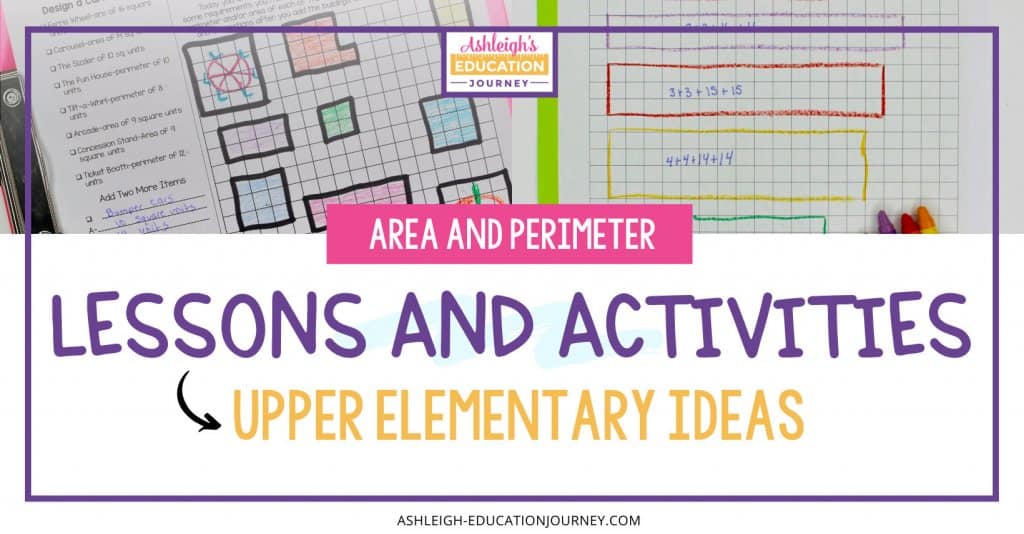
My absolute favorite thing to teach in math is area and perimeter. There are SO MANY fun things to do with this topic that keep students active, moving, and engaged. In this post, I’ve shared some of my favorite methods for teaching area and perimeter. Each of these lessons are from my Third Grade Area and Perimeter Unit, but even if you don’t use the unit, you should be able to get some fun ideas! To be honest, I also think they work perfectly with my fourth grade standards!
As in most math topics, I don’t teach the formula for finding area and perimeter until my students have the opportunity to explore the concept and to construct their own knowledge and understanding. I first explain the concept of perimeter and we brainstorm situations when we would need to know the perimeter of something. In the past I used geoboards to introduce perimeter, but they always created a little confusion; students wanted to count the pegs rather than the sides. Now, I like to use pattern blocks to introduce perimeter.
In this post:
- Pattern Blocks
- Editable Perimeter and Area
- Spaghetti and Meatballs for All!
- Ordering Rectangles
- Perimeter and Area Robot Activity
- Spin the Perimeter
Pattern Blocks
In our first activity, I have students find the perimeter of pattern blocks using the side of the square as 1 unit. Students then create designs out of pattern blocks and trace their design on construction paper. Students can then find the perimeter of their design using the side of the square as 1 unit.
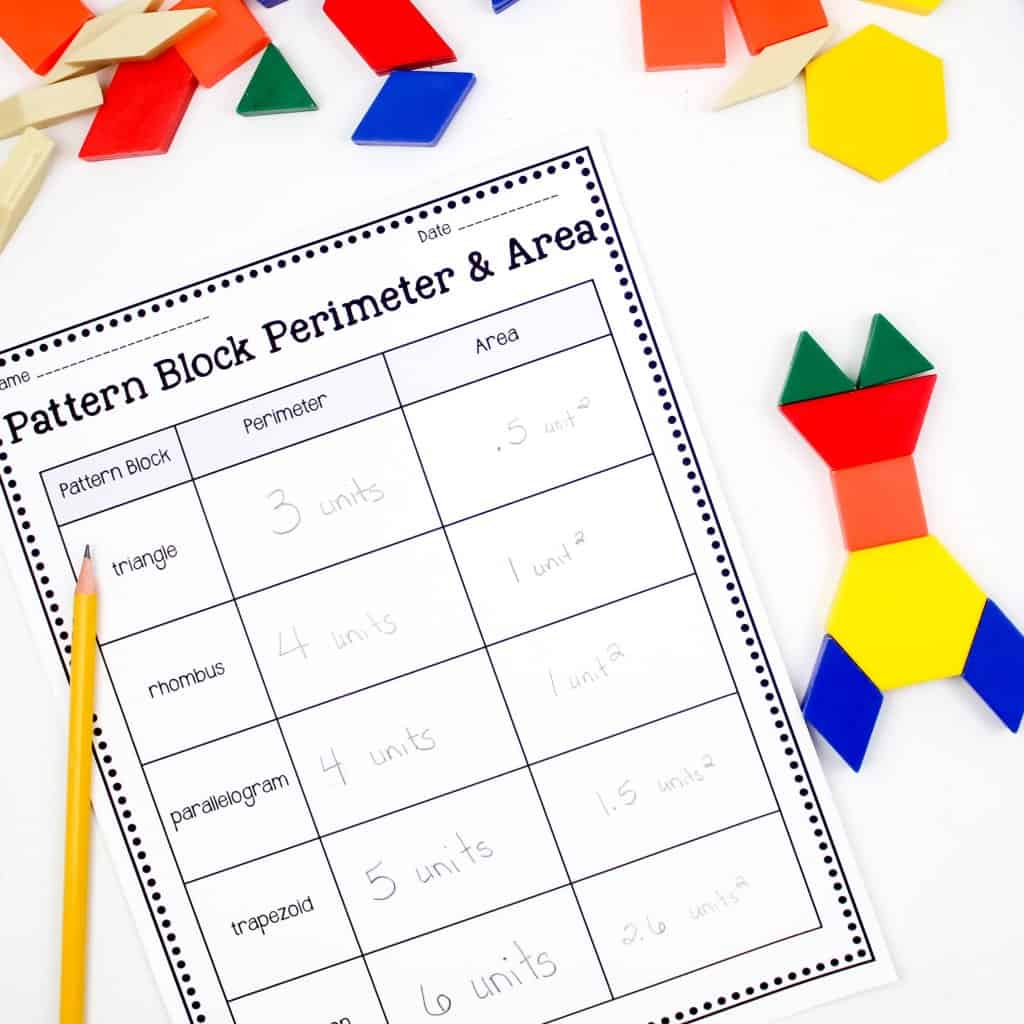
I like to continue teaching the concept of area and perimeter with a game in my follow-up lesson. As students play, many develop the understanding that they can add the sides together to find the perimeter of an object. To play the game, students should roll a die and take that many color tiles. Students should arrange the tiles to make a polygon and find the perimeter of the polygon. Students take turns rolling the die, and after each new roll, they add the tiles to their current shape and find the new perimeter. The first person with a perimeter of exactly 24 wins the game.
You can also have students find the perimeter of tangible items in the classroom, such as books and desks. This is a great way to way to have students practice reading a ruler. If you’re working with students who don’t have experience adding fractions, have students round to the nearest whole number. However, if your students have prior experience with adding fractions, they can get extra real-life experience by measuring to the nearest fourth inch.
Edible Perimeter and Area
When I introduce and start teaching area, I love using Cheez-It crackers. The only problem with this activity is that Cheez-Its are an absolute weakness for me. I could eat them all day! Once again, I don’t tell students the formula for finding the area of a quadrilateral. Instead, I want students to construct this knowledge on their own. In this activity, students manipulate squares to modify the area and perimeter of a given shape. To introduce this activity, I call out different measurements and have students build shapes (usually quadrilaterals) with their Cheez-Its. After students build their shapes, they draw a picture of each image on their recording sheet. After the activity, we discuss how the different measurements can be built in many different ways.
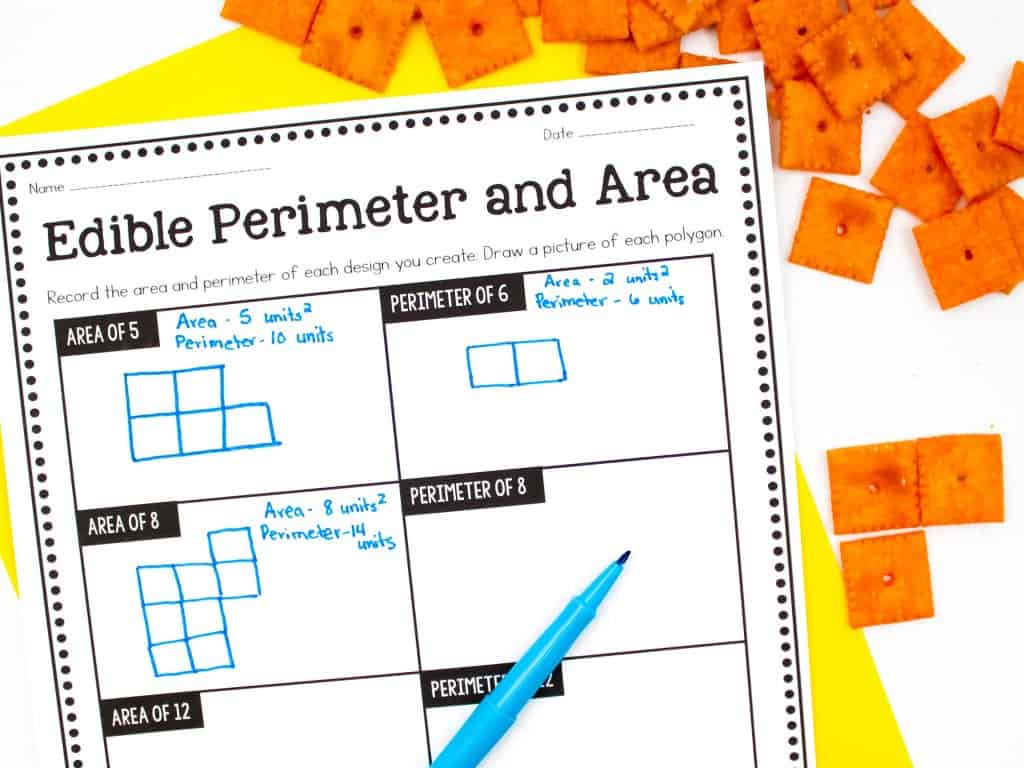
I follow that activity with another hands-on lesson using a different manipulative-pentominoes! First, I give each student a set of pentominoes (I included a template for paper ones). Next, the students look at the common attributes of the pentomino (each piece has an area of 5 square units and all sides meet to form a right angle). In the activity, students choose three pentominoes and create a polygon with those pentominoes. Students then find the area and perimeter of each of the polygons they created. I like to have students explain what they noticed about the areas and perimeters of the polygons. As an extension activity, have students use 3 pentomino pieces to discover the longest perimeter they can make or the largest area they can make.
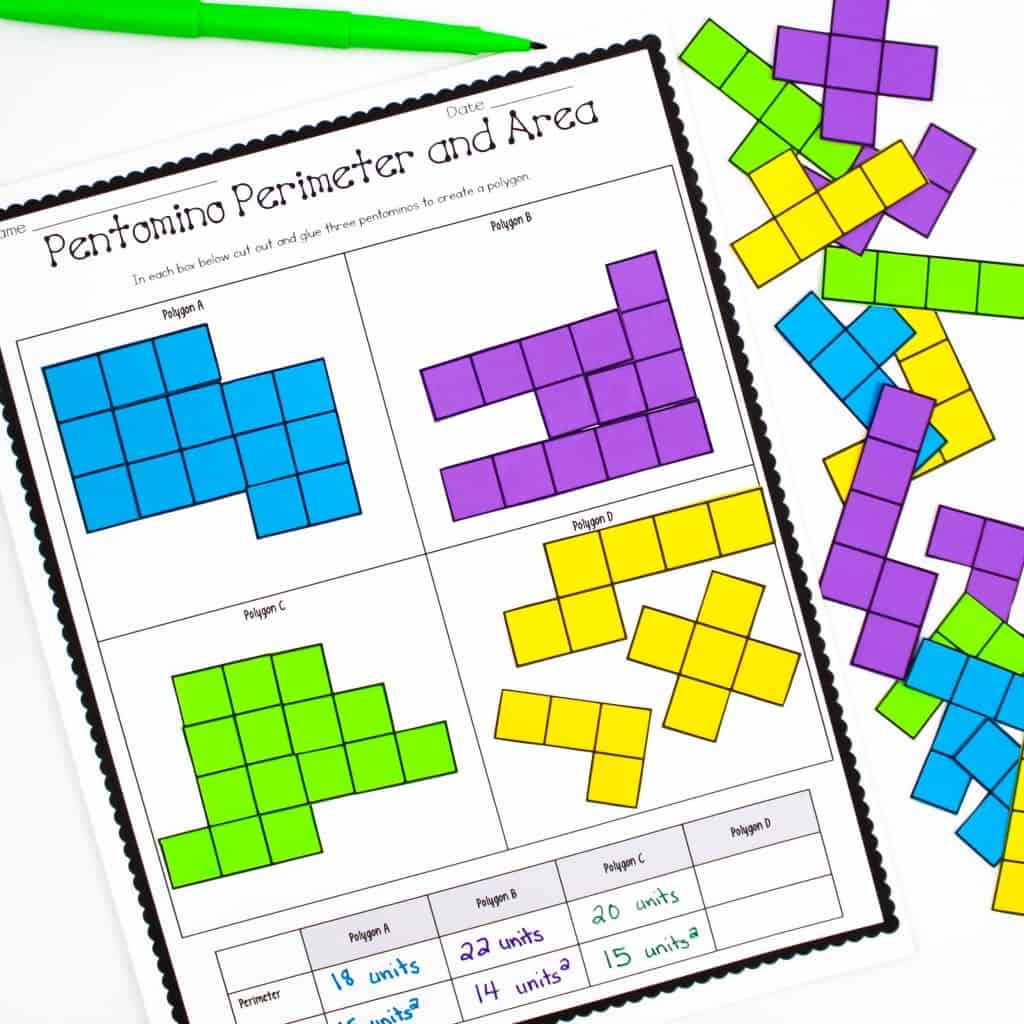
Spaghetti and Meatballs for All!
A great book to integrate literature and math is Spaghetti and Meatballs for All. In this book, a family must create a seating arrangement for a party they are hosting. To extend the book to an area and perimeter lesson, have students create their own seating arrangement for the family. As students manipulate the squares (tables), they discover that when two separate squares (tables of four) are rearranged into a rectangle, two seating spaces are lost where the squares are joined together. Students may recognize that as the perimeter gets smaller, the rectangle gets closer and closer to a square. Have students pretend they are planning a party for 18 people. They have six square tables they can use, but they don’t have to use all of them. Each table seats four, one on each side. I have students draw a picture of the table arrangement and label each place to show who will be sitting in each seat. To incorporate writing, I have students describe what happened to the perimeter as tables were pushed together.
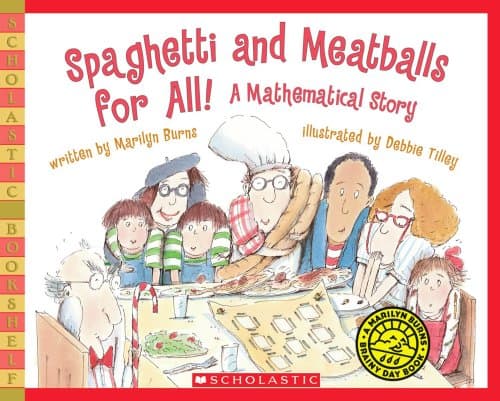
Once students begin to show a solid understanding of area and perimeter, I have them create an Area and Perimeter Carnival. This is a great way to incorporate art and math. The recording sheet for the activity includes the area or perimeter of eight rides that must be included in the carnival. Students use the recording sheet to draw each ride. You can make this as elaborate or as simple as you want. I like to have students draw their rectangles first and then they can spend time drawing the ride inside each rectangle. As an extension, students may add two of their own additional items.
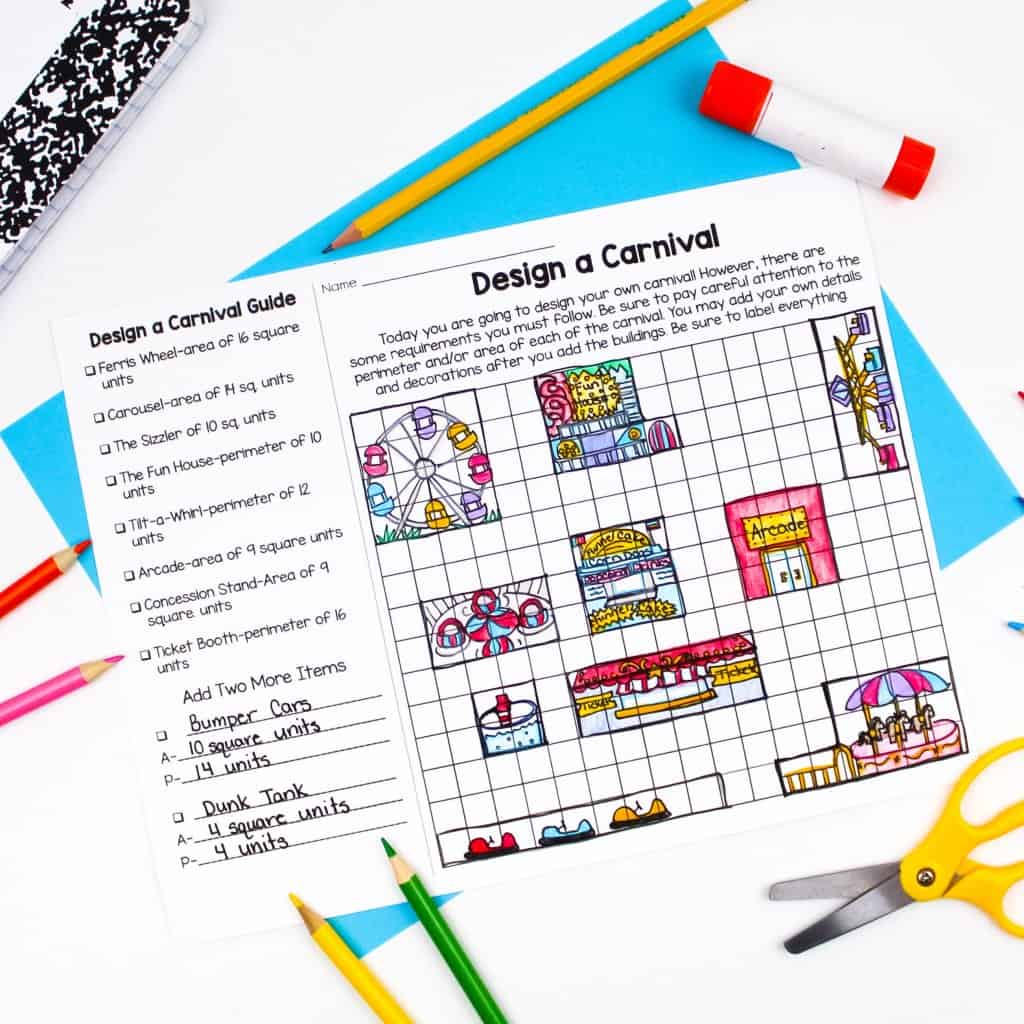
Ordering Rectangles
Another excellent conceptual lesson for teaching area and perimeter is when students draw rectangles with a given perimeter. Have students draw all the rectangles they can with the same perimeter on their grid paper. Students should also find the area and write it inside each rectangle. I then have students cut out the rectangles and order them from smallest to largest area and glue them on construction paper. Once students finish the task, I post their work so they can see several examples of rectangles with the same perimeter arranged by area. If you select larger numbers such as 36, you may need to supply students with extra grid paper so they will have enough space for all of their rectangles.
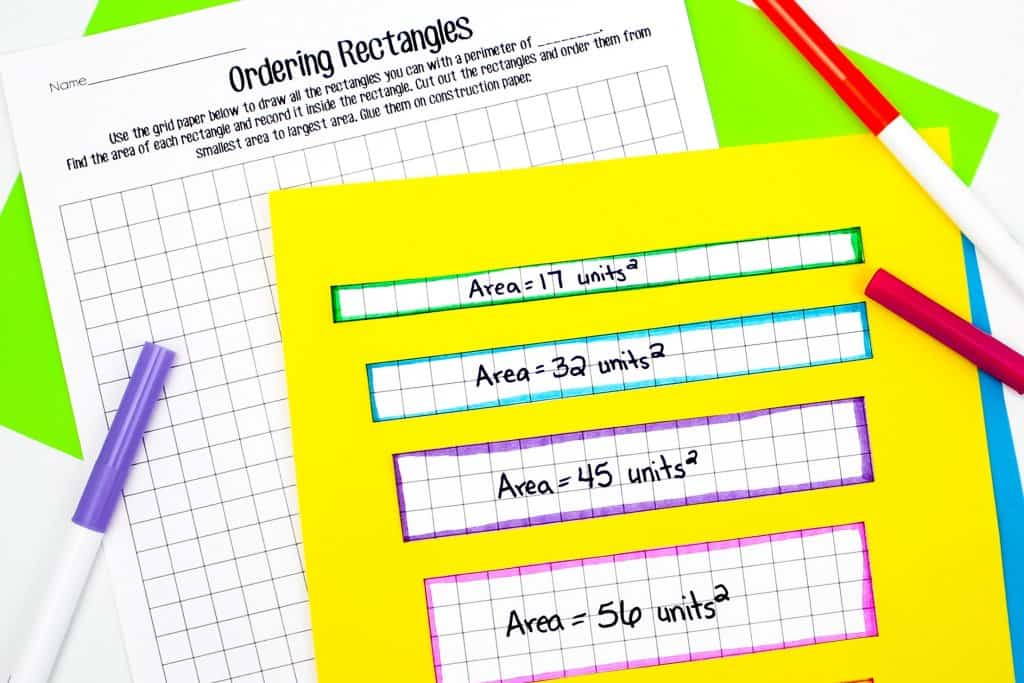
Perimeter and Area Robot Activity
One of my favorite tasks for teaching area and perimeter is my perimeter and area robot activity. I use the task as a performance assessment, and it is a huge success every year. I love activities where my students get excited and have the opportunity to apply all they have learned.
We always start the activity by pretending that our class has received an official letter from NASA. I make a big deal out of opening the envelope. I act very secretive, because of course, it’s a top secret mission, and everyone always gets so involved in the project. NASA asks students to build a Perimeter and Area Robot. The catch is that each body part of the robot must be a specific perimeter or a specific area.
I have students cut out the pieces from one centimeter grid paper and glue the robot together on large construction paper. Since I originally created this pack, I have since added multiple versions for easier differentiation. One version is for perimeter only, another version is for area only, and the third version combines area AND perimeter.
All of the lessons above are from my Third Grade Area and Perimeter Unit. I recognize that it never hurts to have to have extra practice pages, so I also created a No Prep Area and Perimeter pack. You can use these printables to compliment or supplement your existing area and perimeter unit. I apologize for the picture overload, but there are SO MANY great activities to choose from!
It begins where students find the perimeter of polygons by counting the sides of a rectangle.
The students find the perimeter by using the formula and adding the sides together.
To increase the challenge, students then draw shapes with given perimeters with and without grid paper.
Spin the Perimeter
Of course, I had to include a perimeter game, so I created a game called Spin the Perimeter, where students spin twice to find the dimensions of a rectangle. They use those dimensions to build a rectangle and find the perimeter of the rectangles.
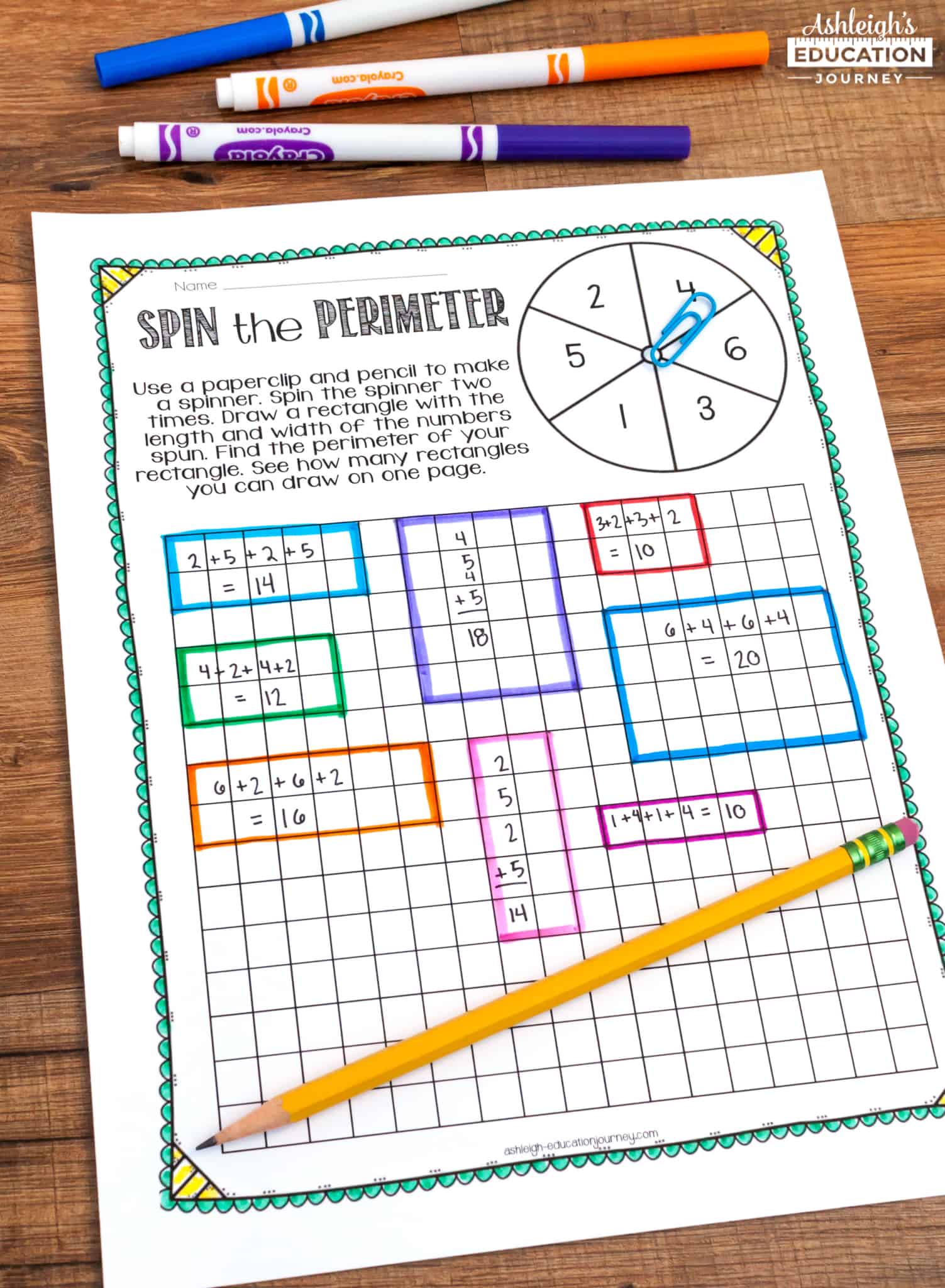 There are also practice pages where students find the missing side of a rectangle when the perimeter is given.
There are also practice pages where students find the missing side of a rectangle when the perimeter is given.
The pack then shifts into isolated area practice, where students first find the area by counting the square units and then by using the formula of length times width.
Students then draw the area with and without grid paper.
I also included an area game, which is very similar to the perimeter game. Students spin twice to determine the dimensions of the rectangle and then find the area of each rectangle.
I also included pages where students find the missing side of a rectangle and where students determine that area is additive and how to solve for area in irregular polygons.
The pack then combines area and perimeter activities to prevent students from confusing the two. It follows the same pattern and has students identify and draw the perimeter and area with and without grids.
I’ve also included a few more rigorous and problem solving tasks to extend student learning while teaching area and perimeter. My students LOVED designing a mall based on area and perimeter. It cracks me up to see what stores they choose to add to their mall.
They also enjoyed the zoo activity where they used a map of a zoo to answer area and perimeter questions.
I included a few extras such as a situational area and perimeter sort, a few cut and paste activities, and area and perimeter word problems.
Hopefully, you’ve found some fun ideas for teaching area and perimeter!

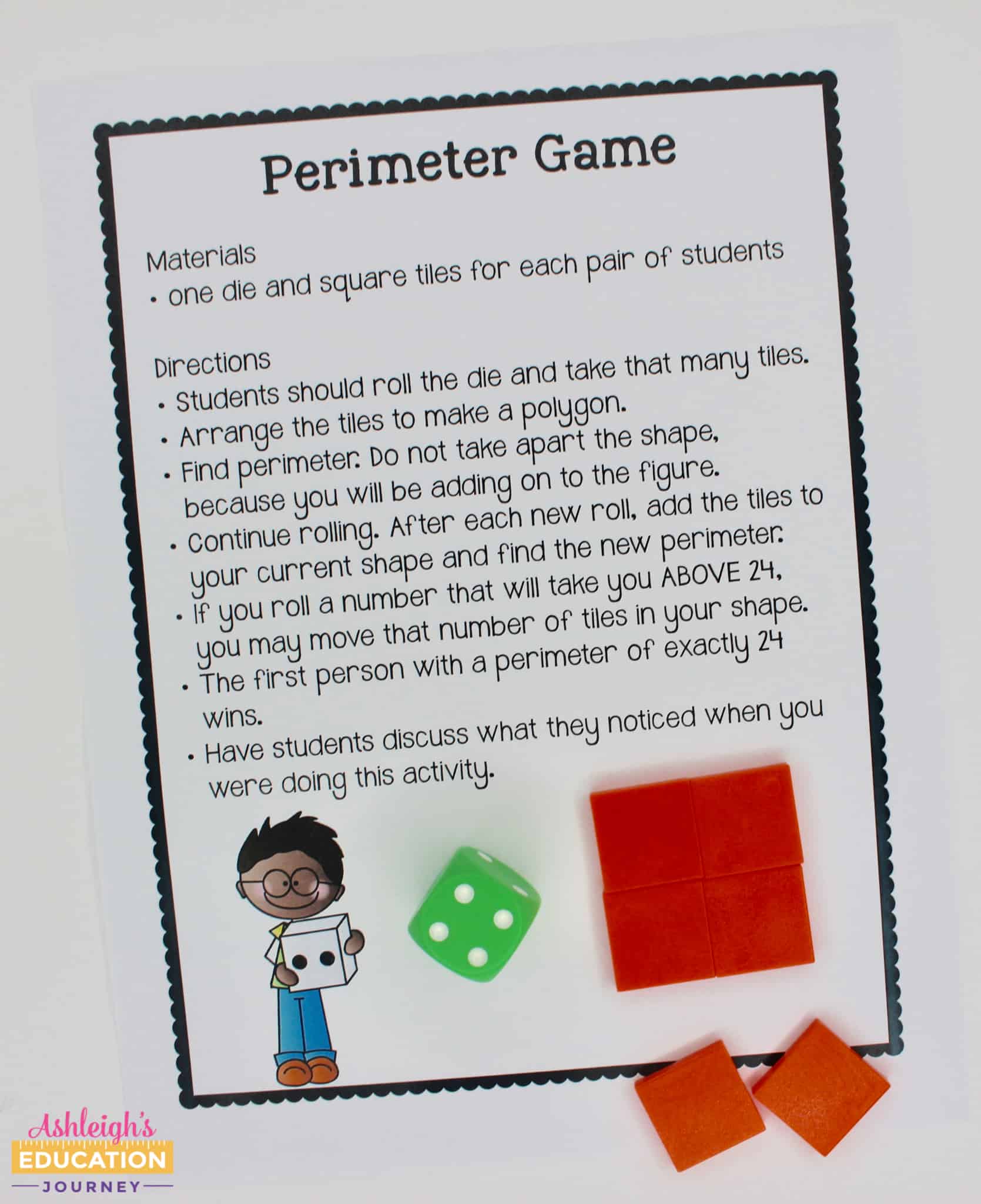
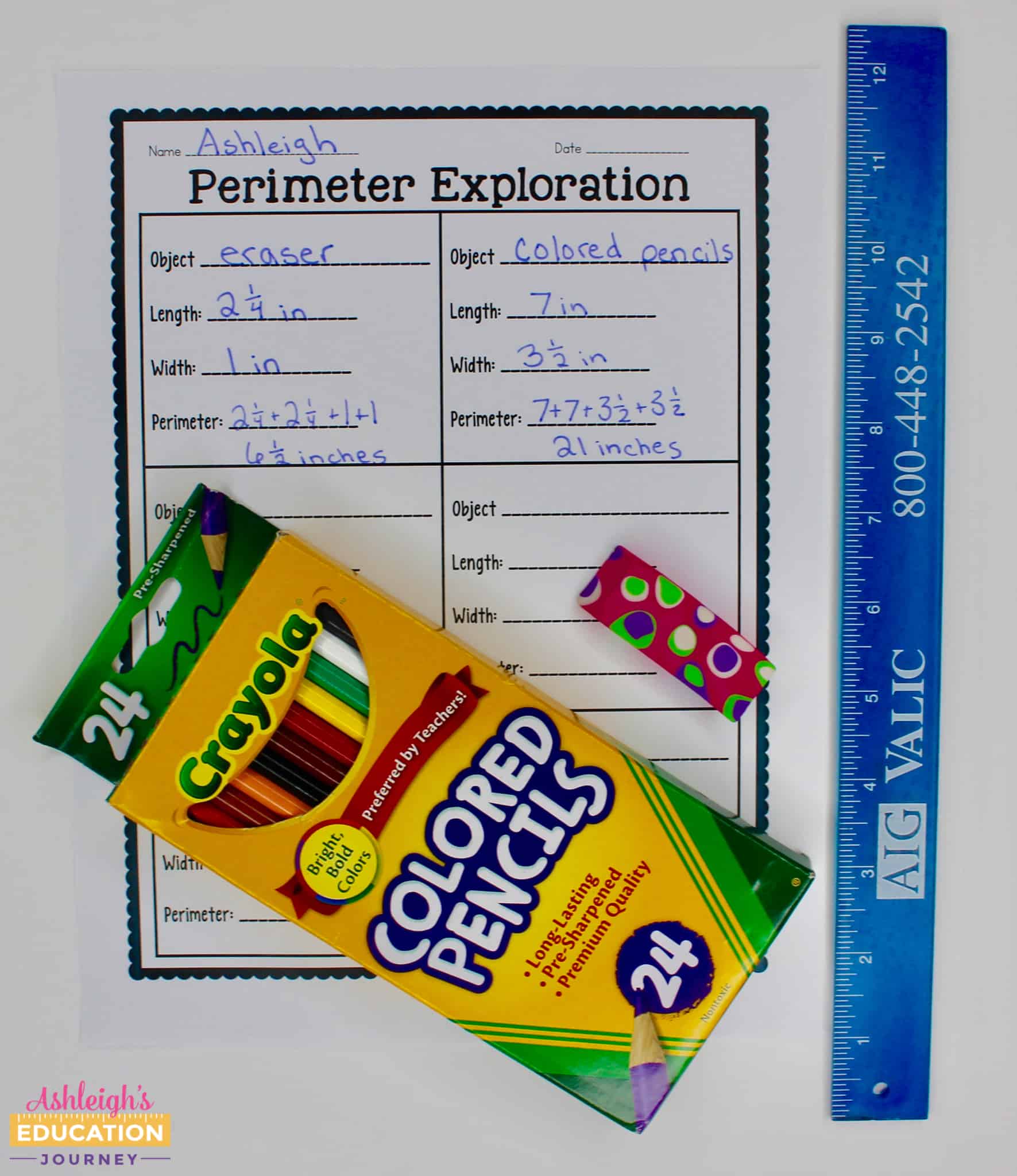
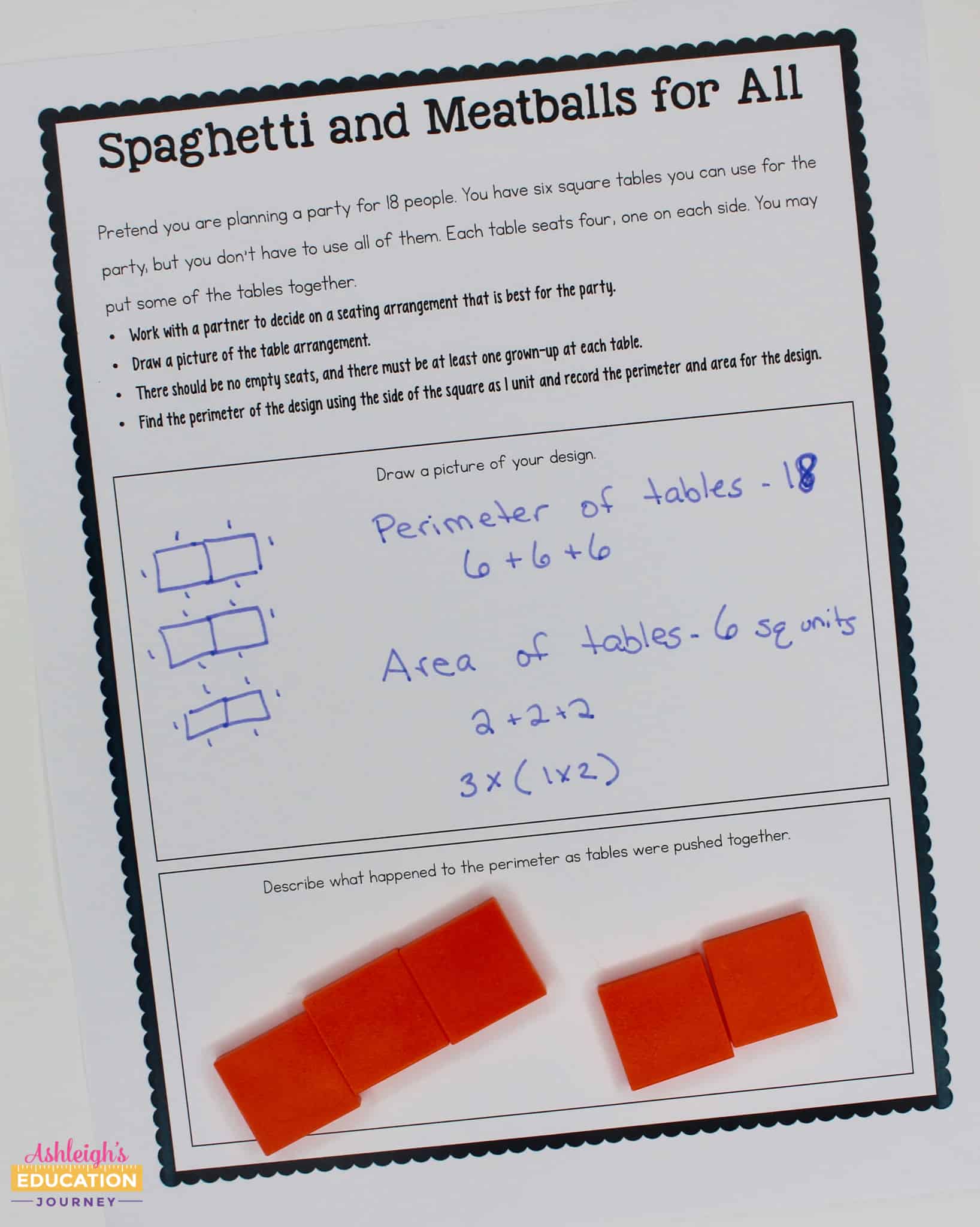
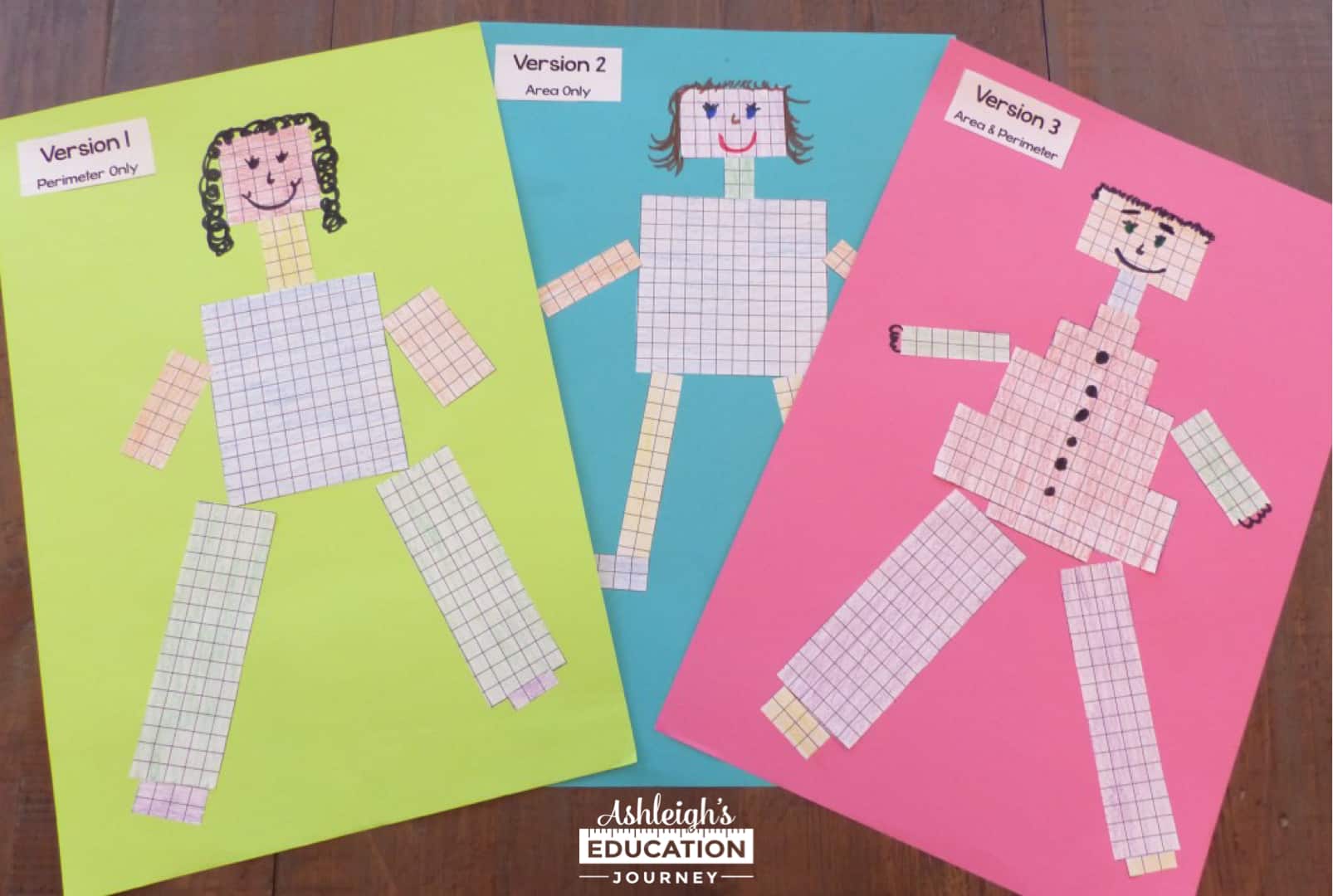
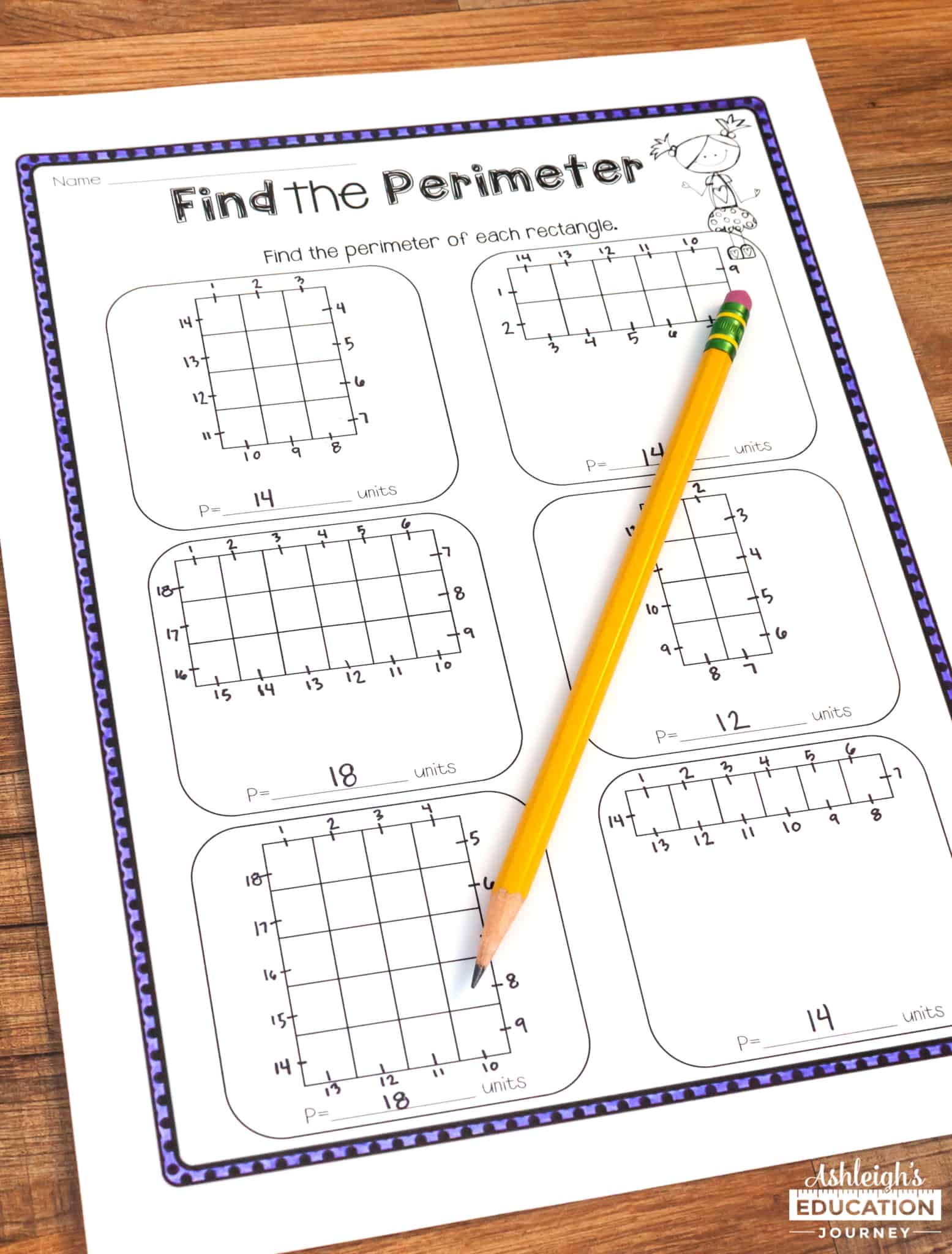
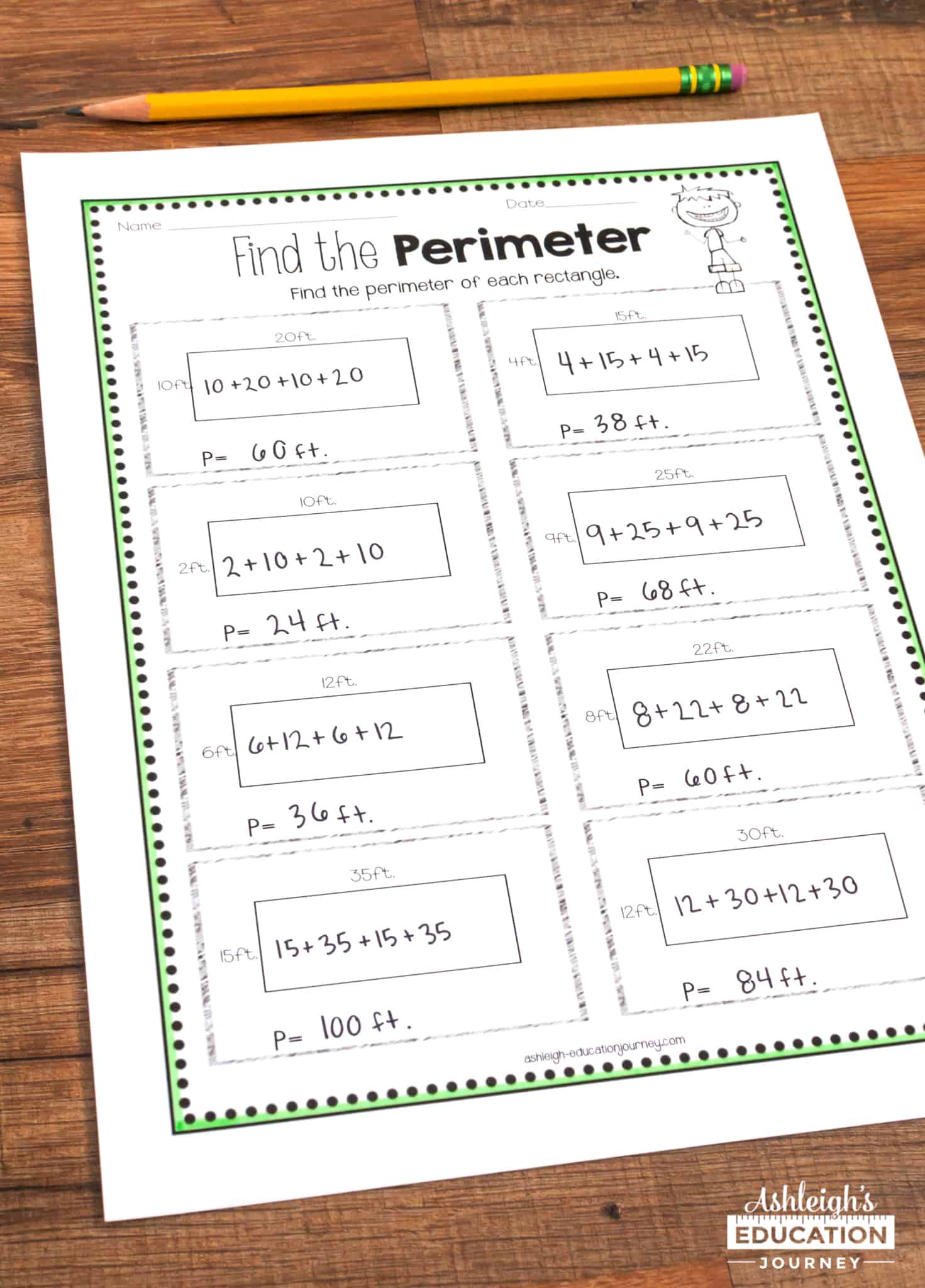
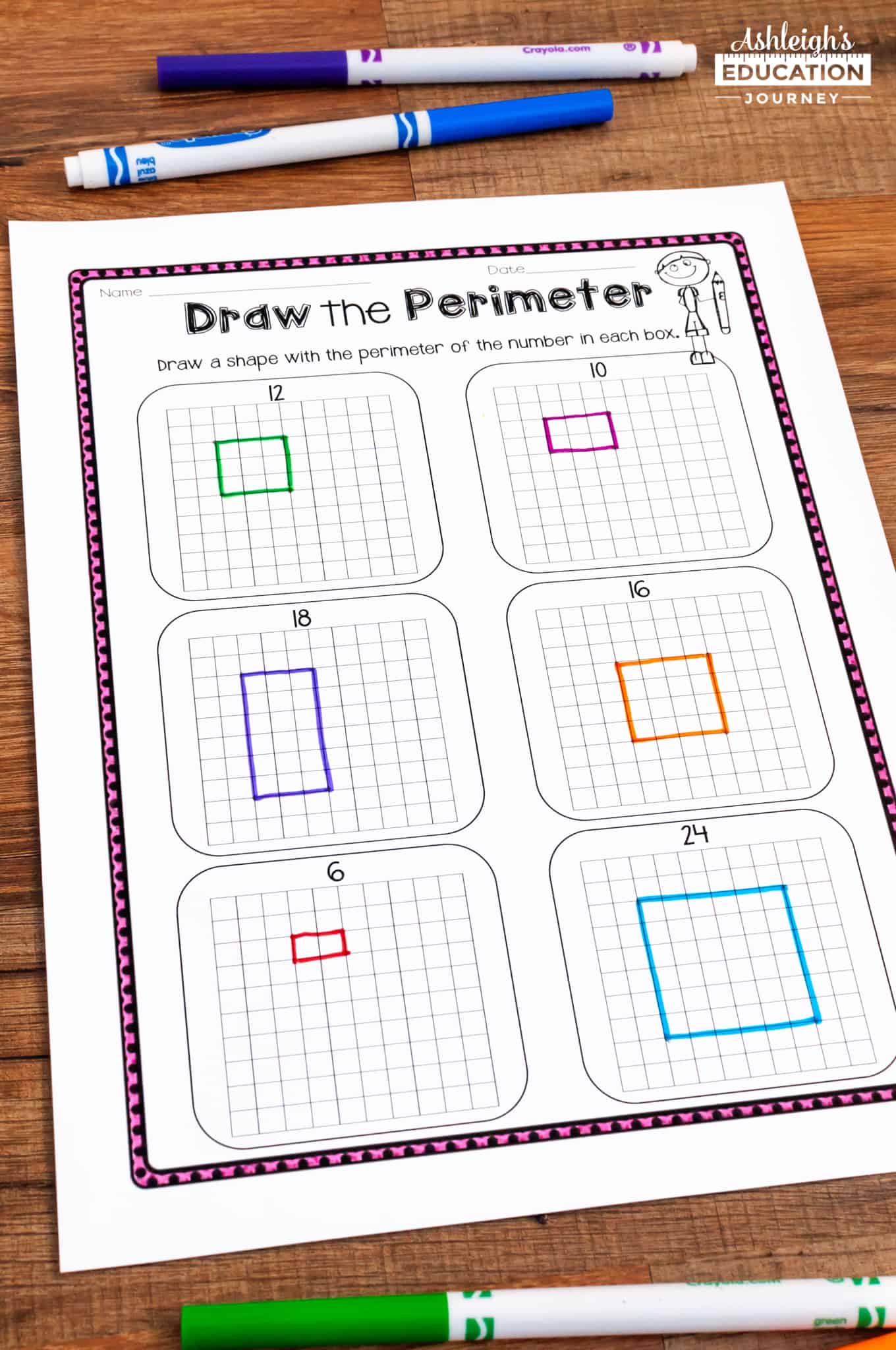
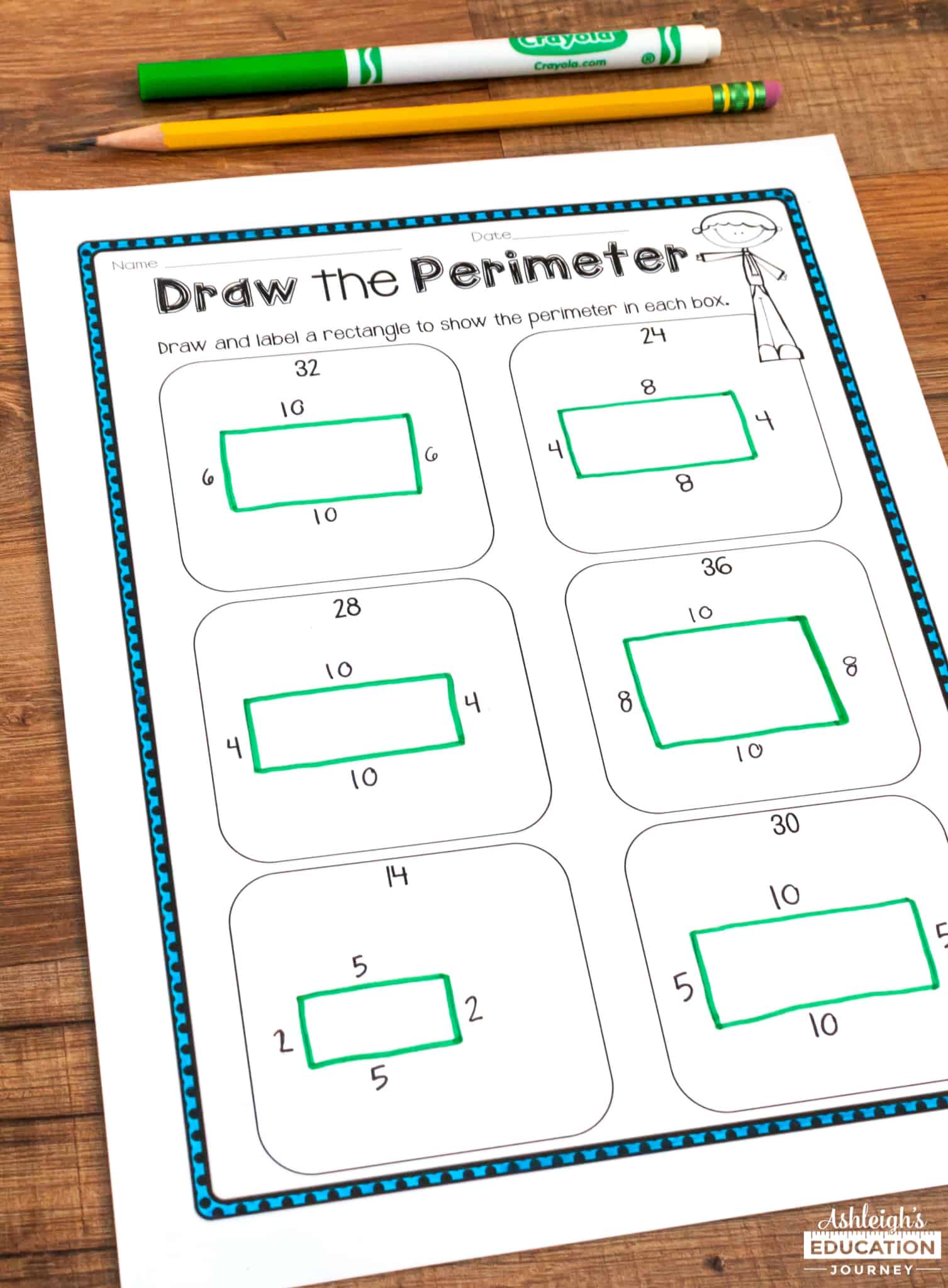
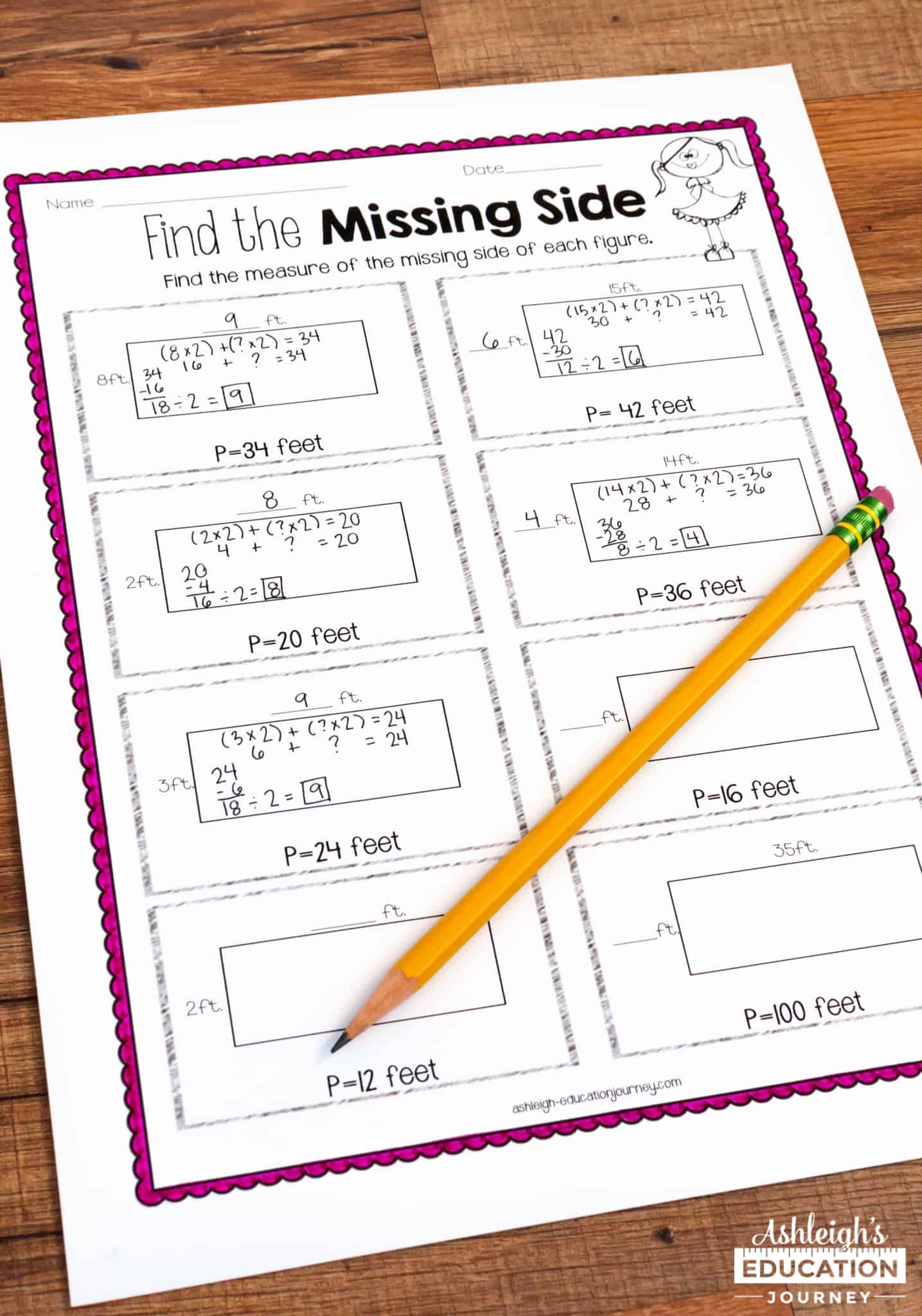
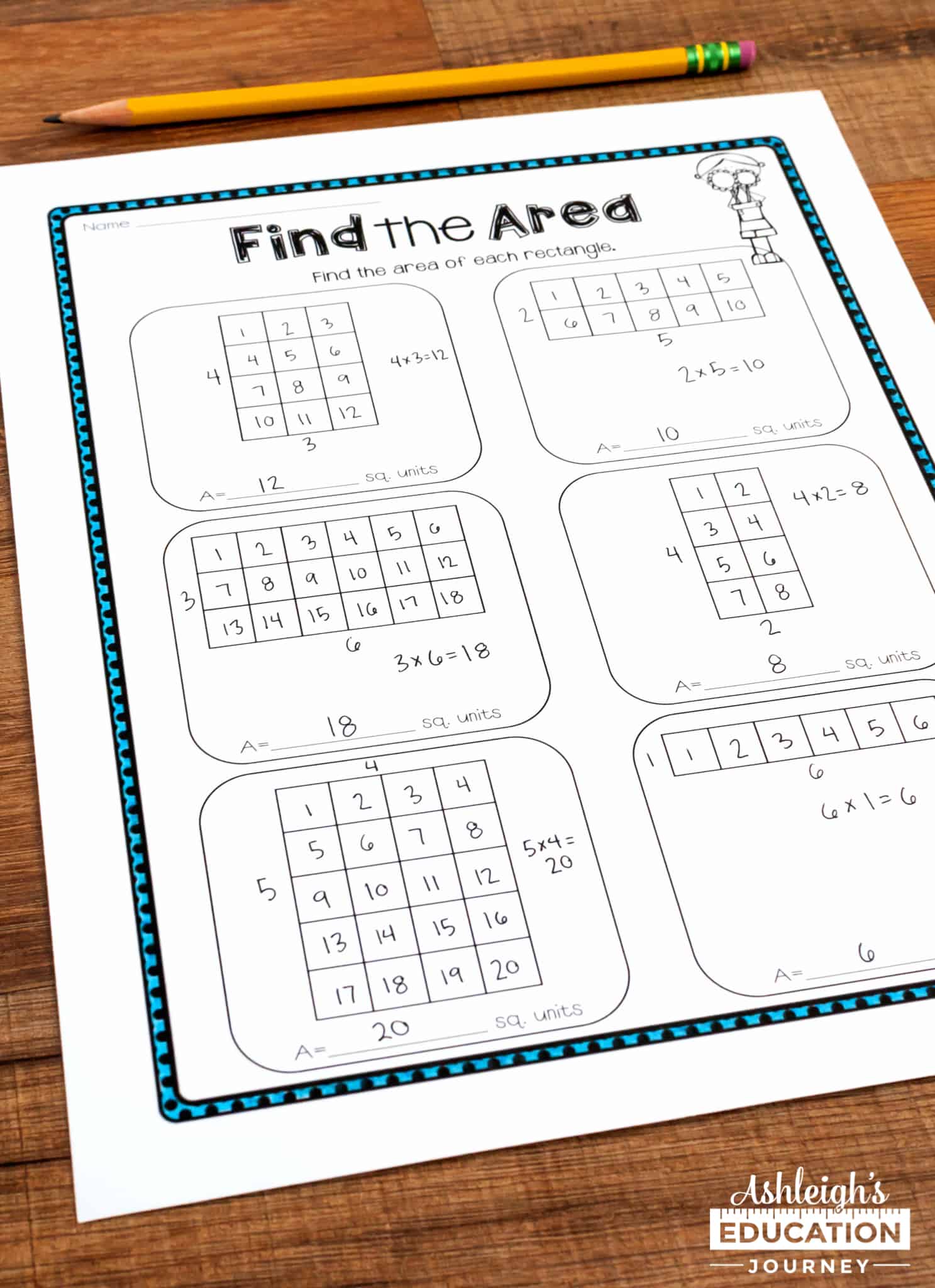
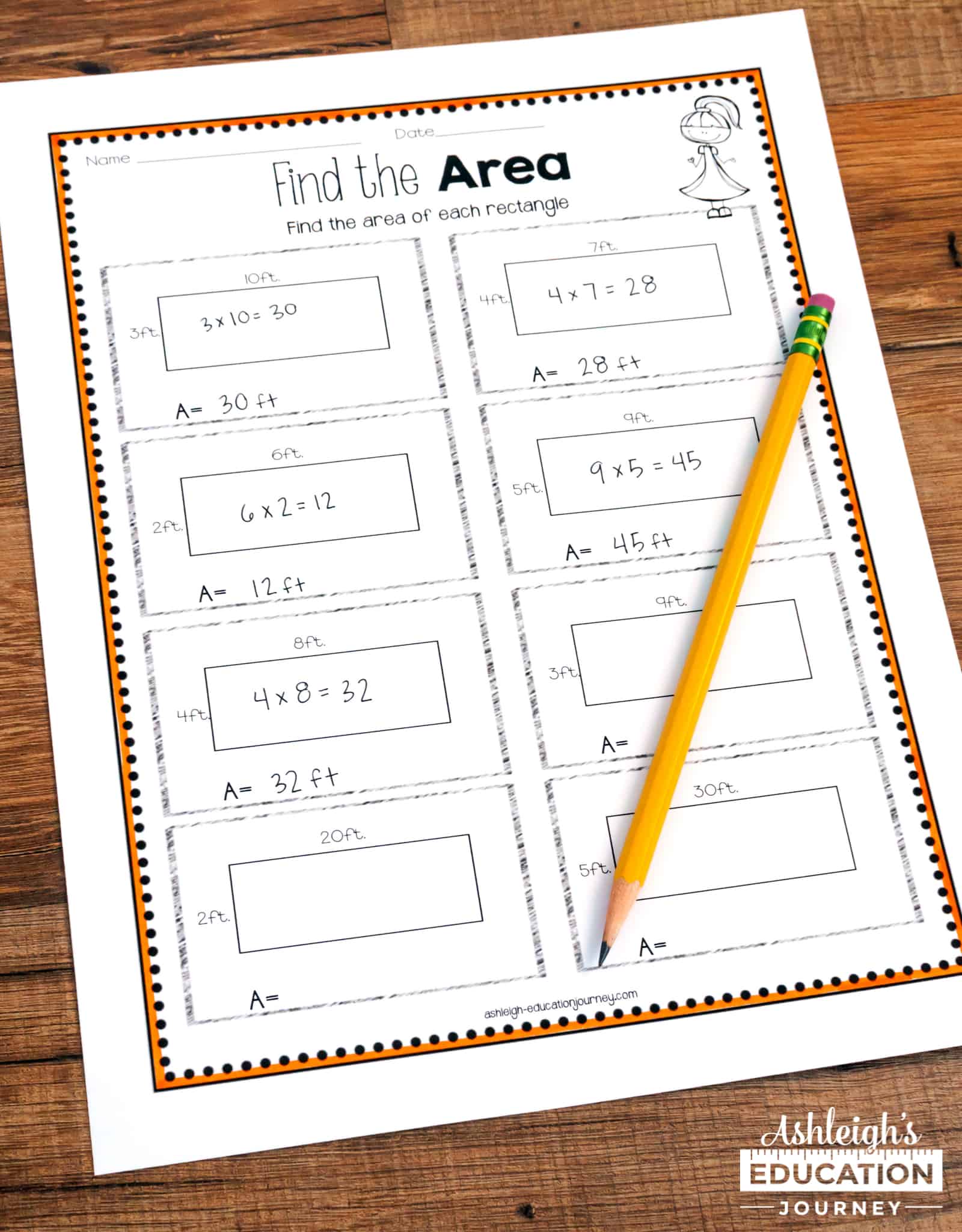
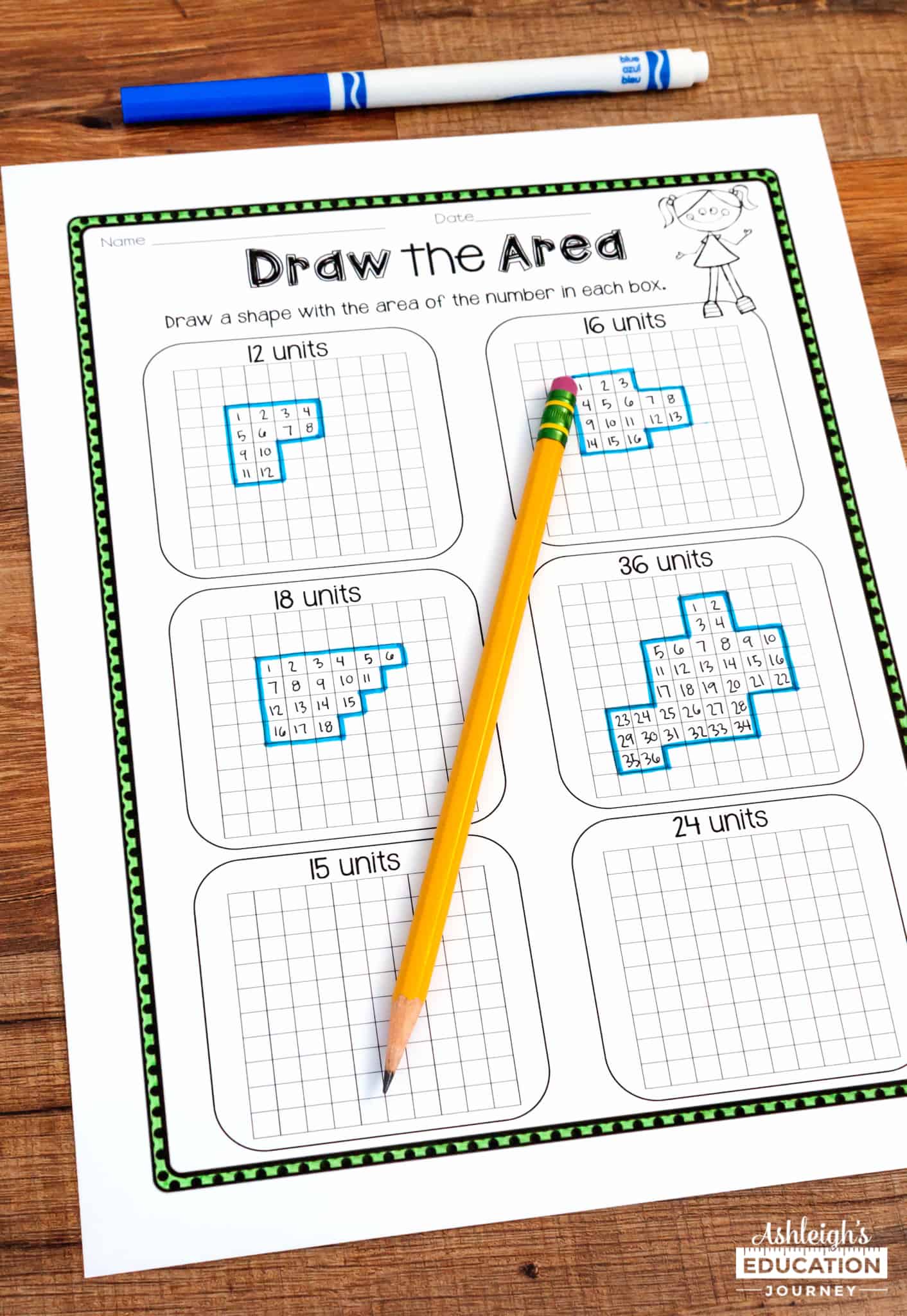
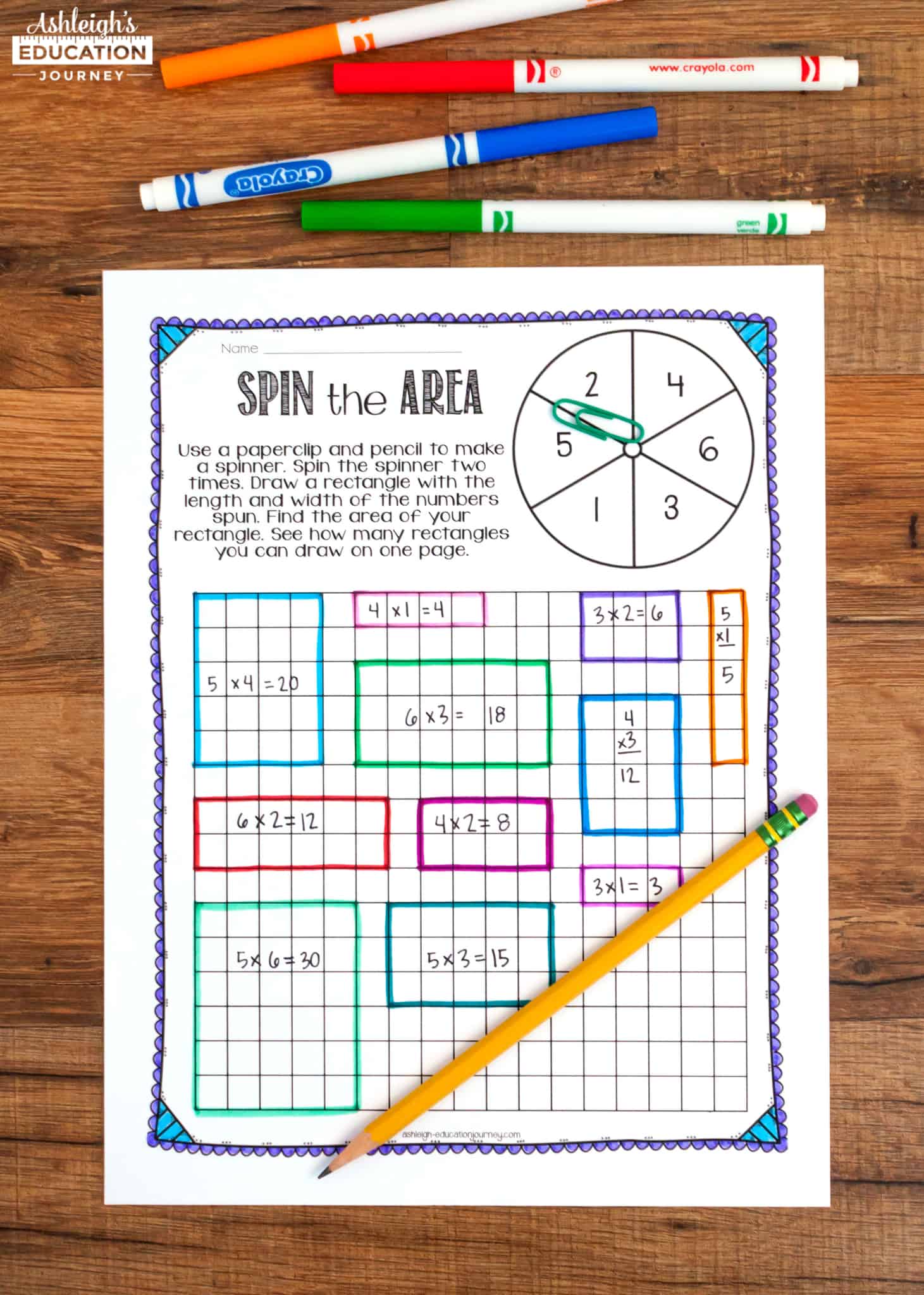
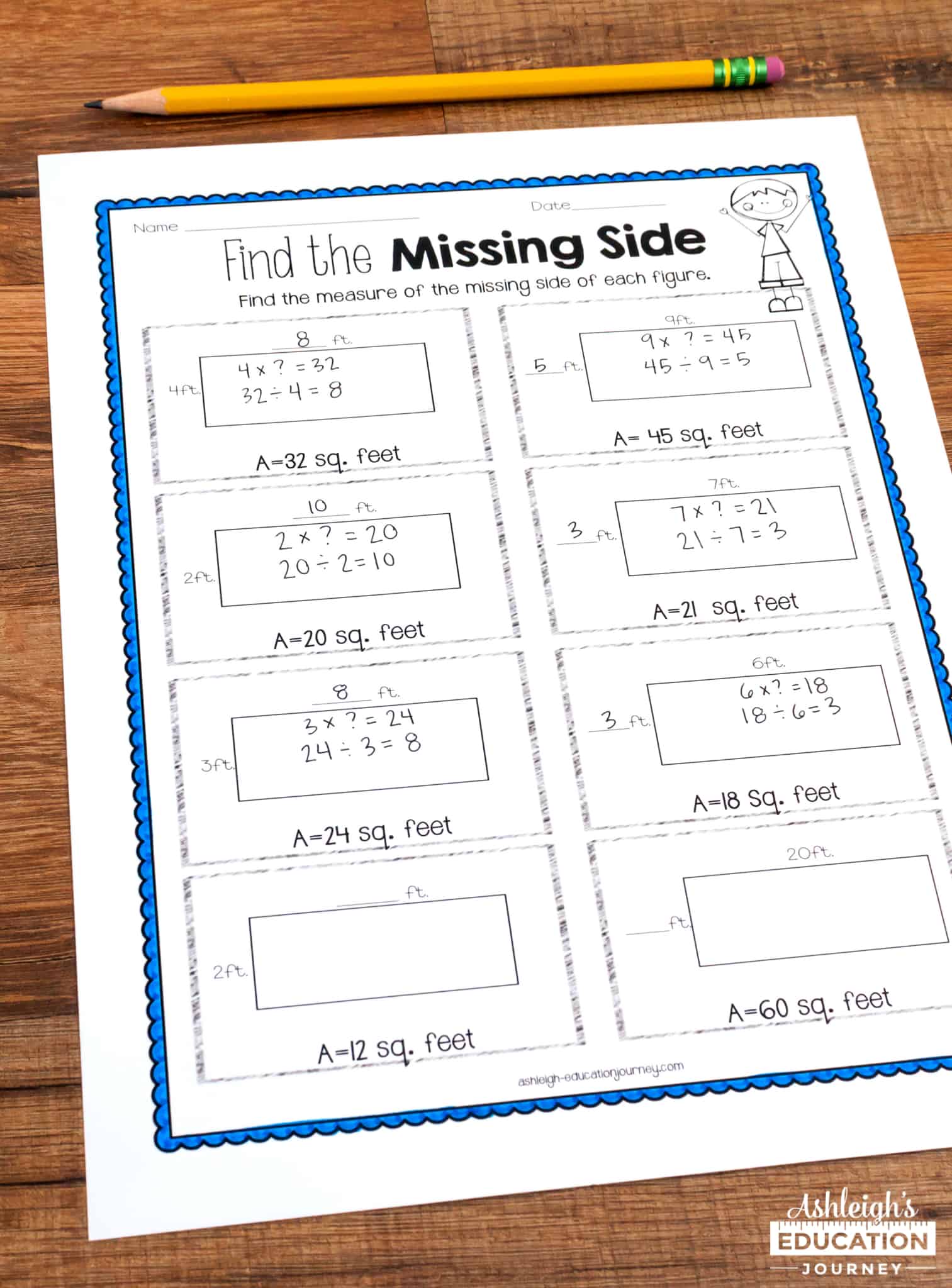
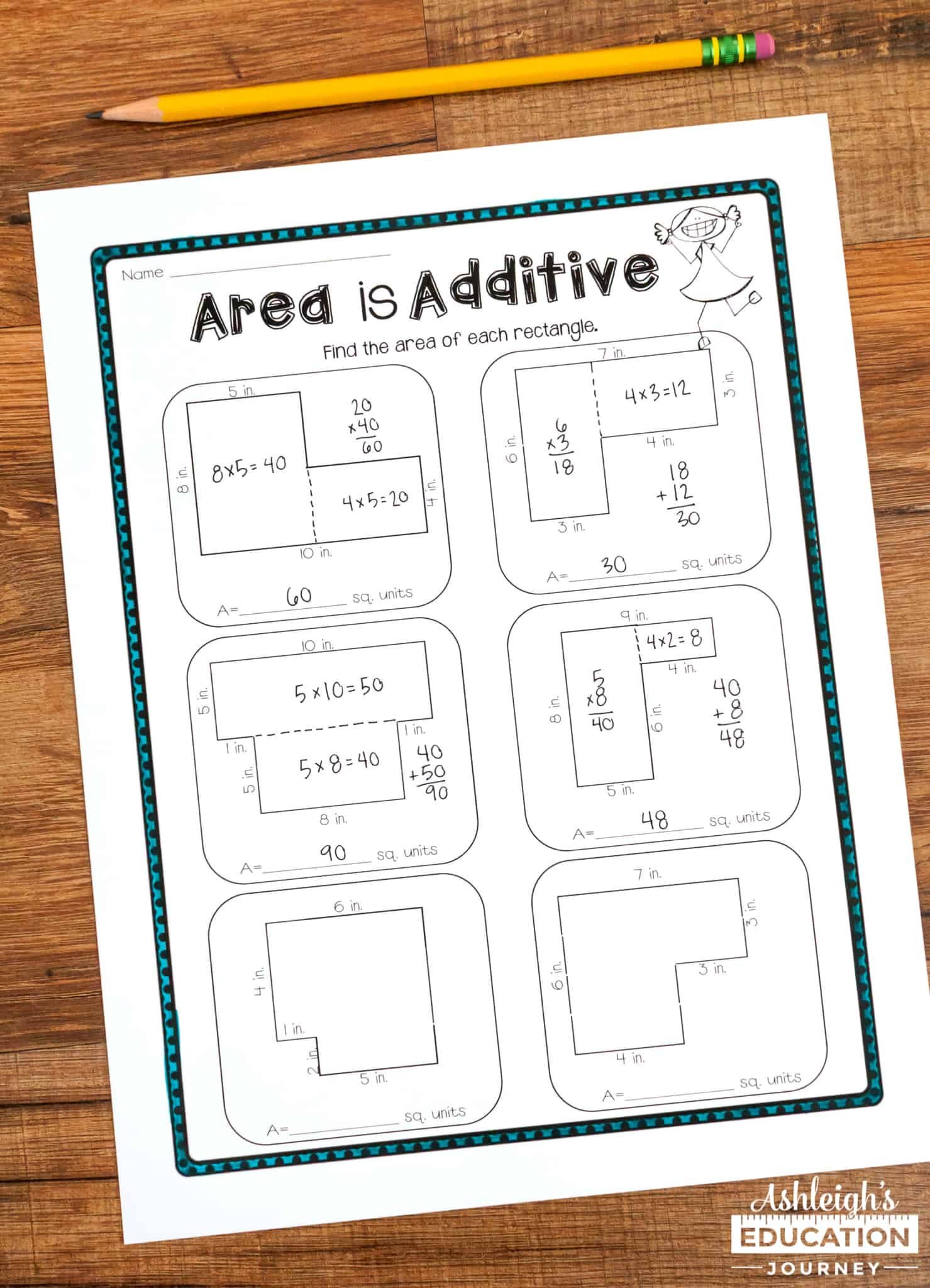
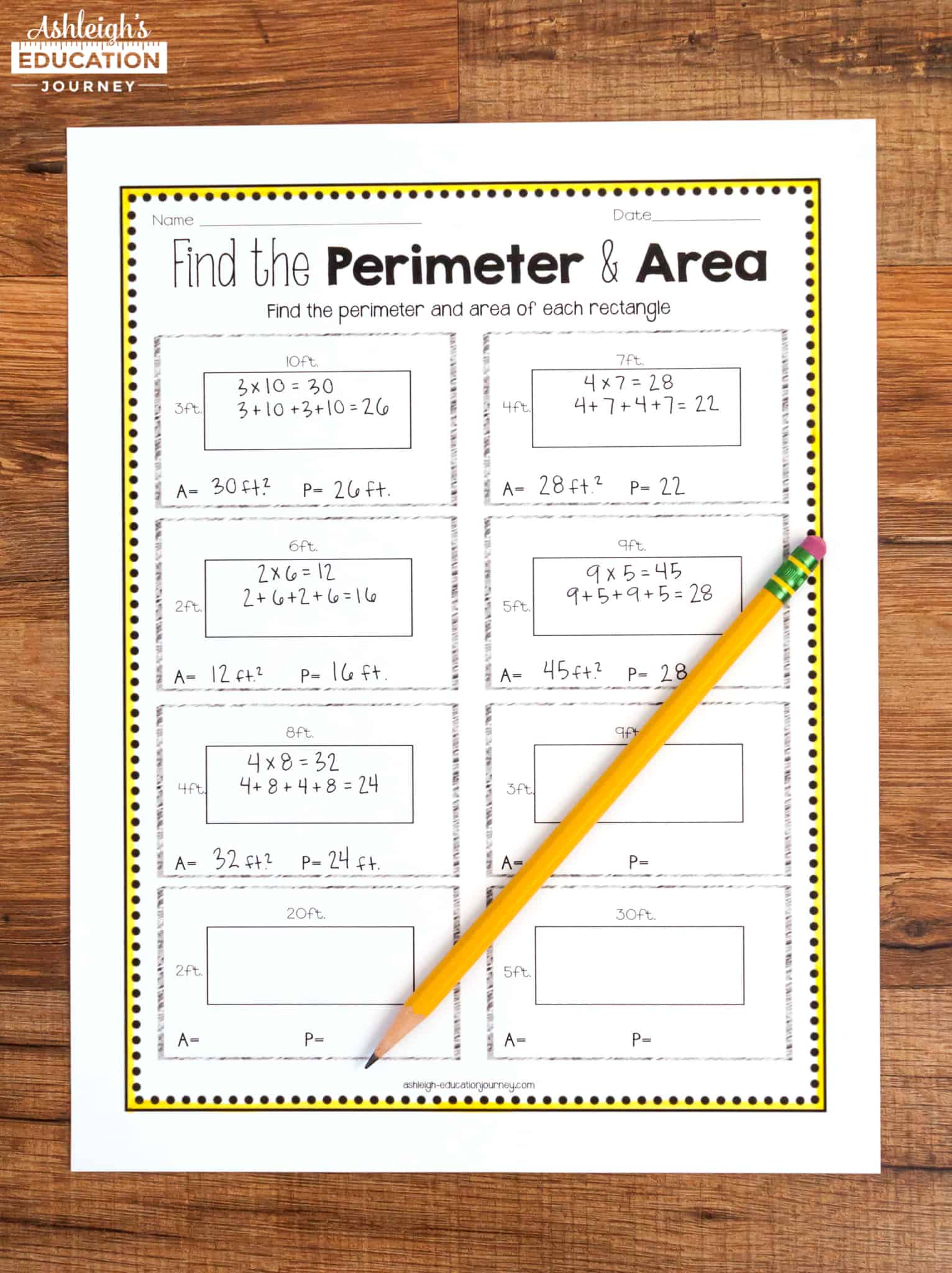
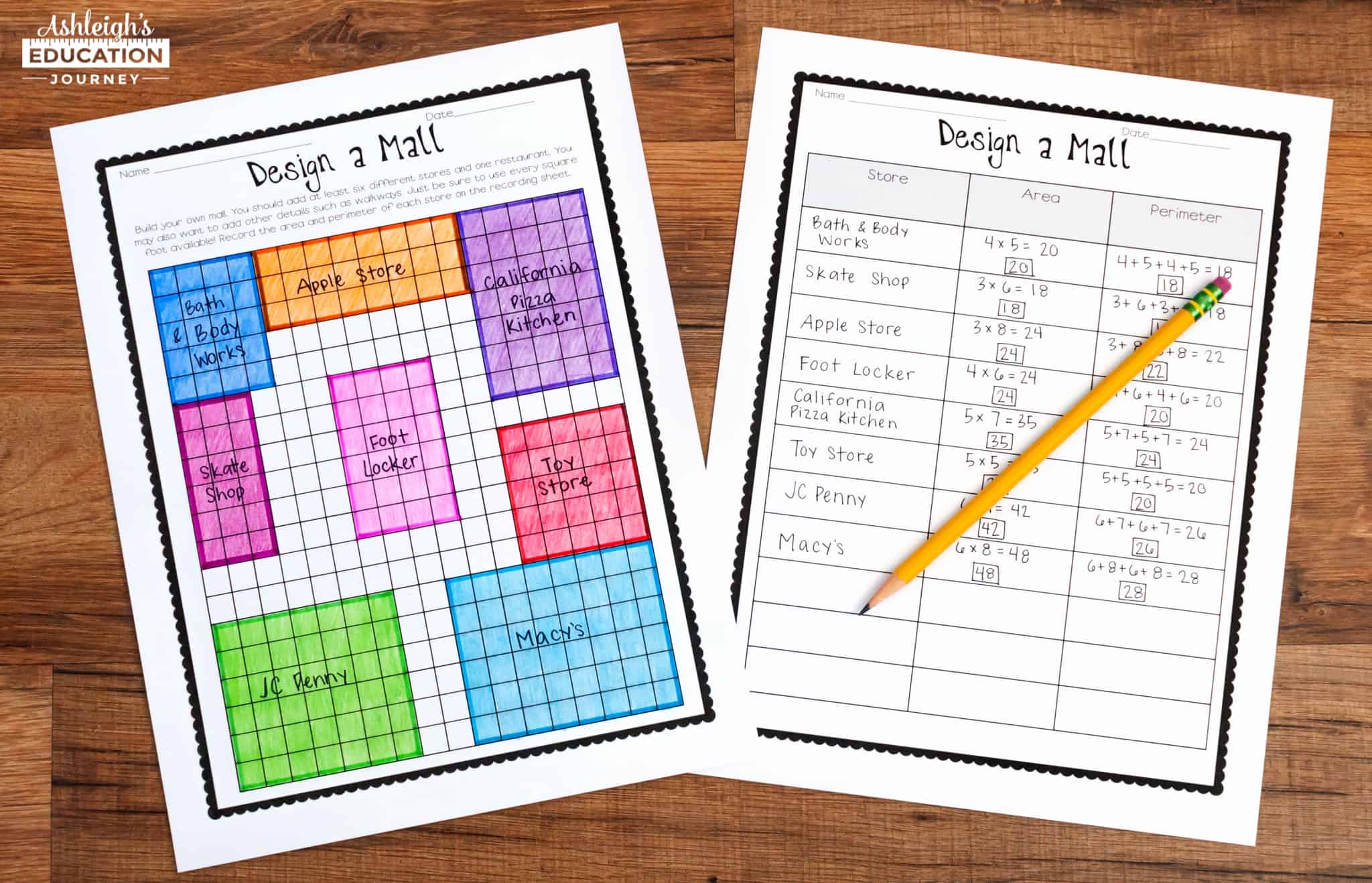
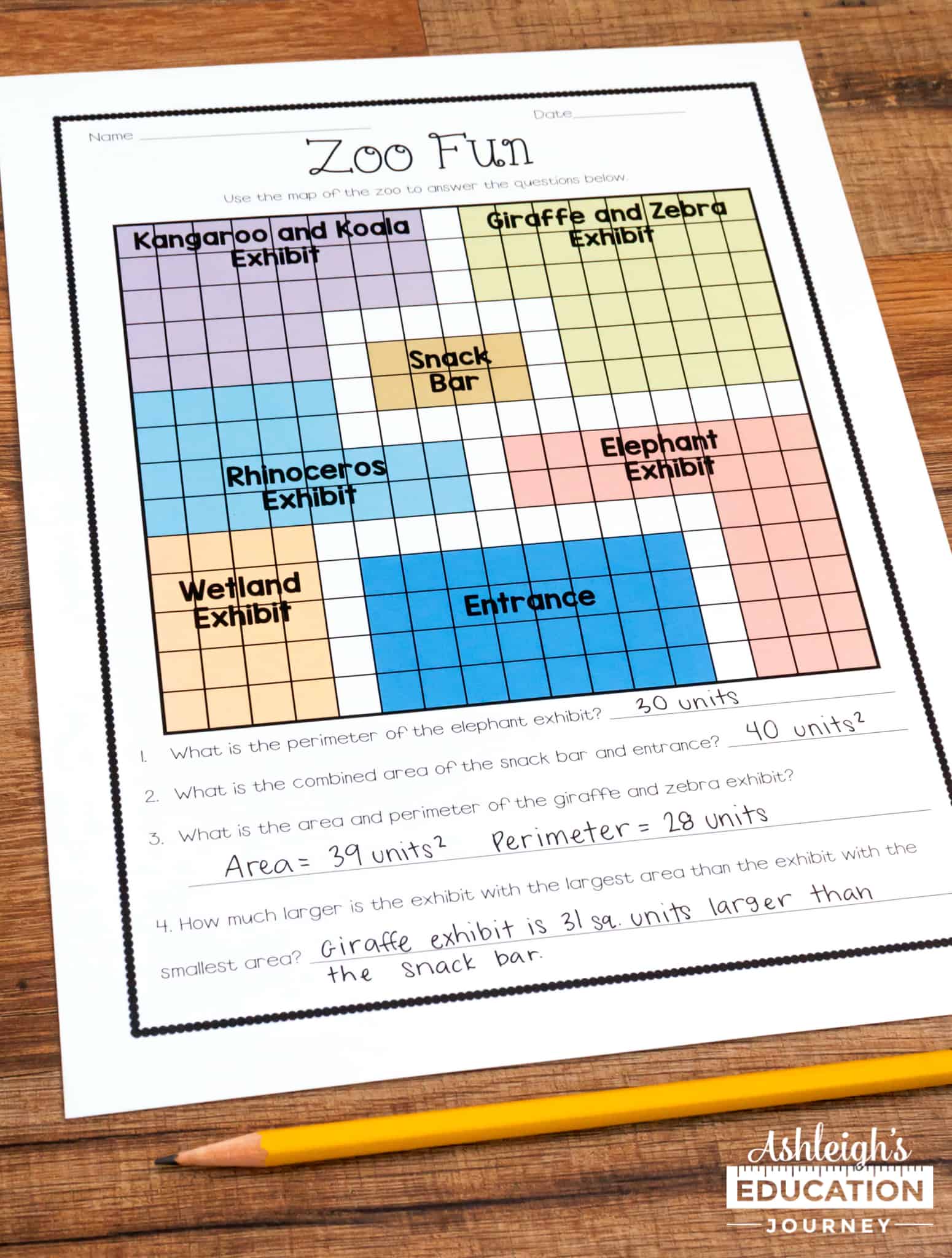
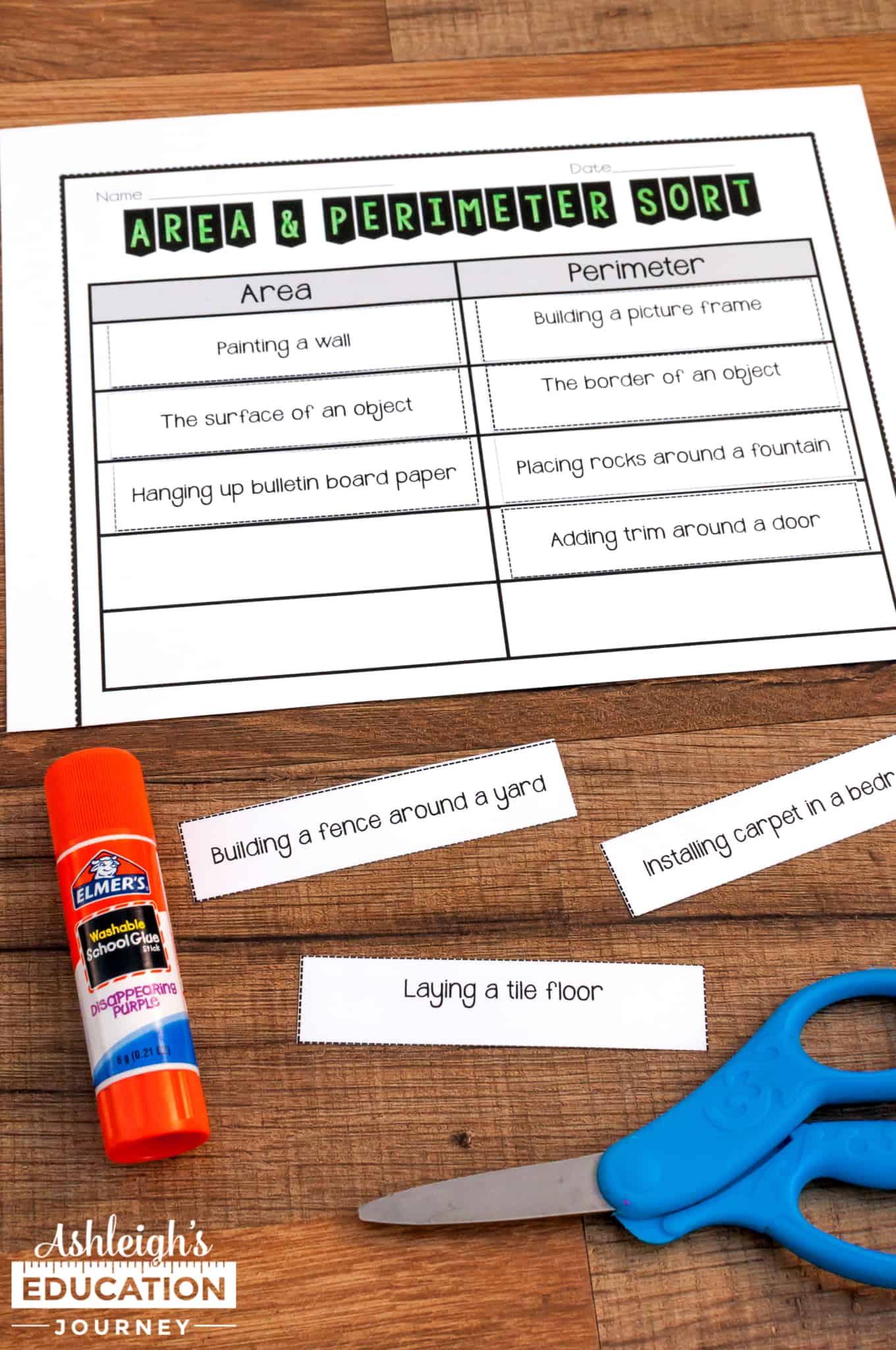
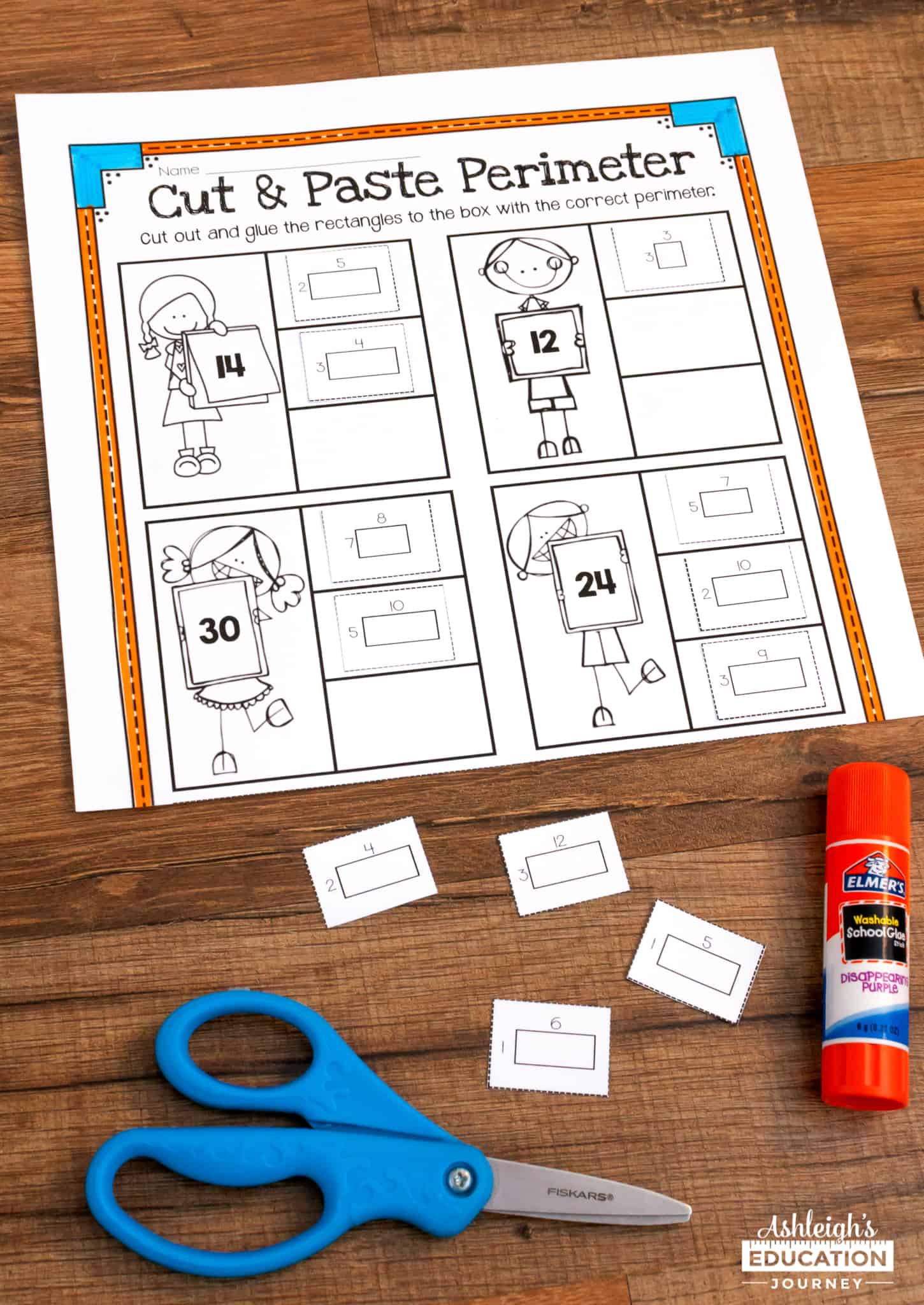
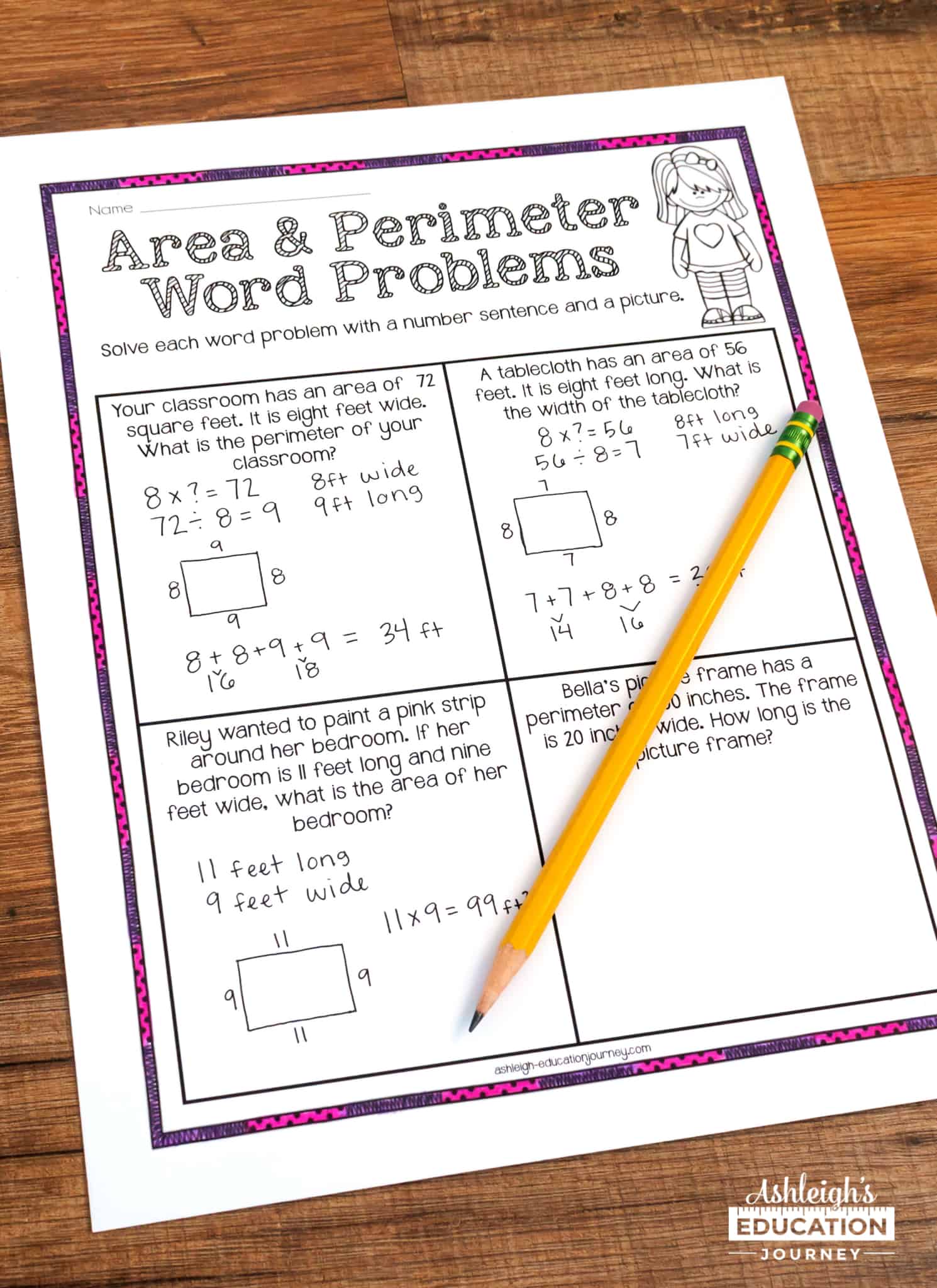


Great post! I’m looking forward to trying some of these activities in my 4th grade classroom!
Great posts! Thanks for sharing your creative mathematical ideas!
Julie
Where can I get these worksheets?
They’re all linked within the post!
The links are just to save on Pinterest, do you have another place where these can be found?
The links are in the highlighted words. The pictures aren’t linked, so those won’t work. Thank you for asking!
I like a lot this post… !!!
I’m a teacher in a state school near to Barcelona
I’d like contact with you for share activities of maths. Thanks.
Um, I’m confused…in the first activity, the trapezoid is listed as having five sides…..Isn’t a trapezoid a quadralateral? Which by definition has four sides? Also, it’s trapezoid not trapazoid.
Oh, the five is the perimeter of the trapezoid-the base is two units long. It’s not for how many sides it has.
Pingback: 30 Fantastic and Free 4th Grade Math Games - Emirates Education Platform
Pingback: 30 Fantastic Free 4th Grade Math Games – teachersconnect.co
Pingback: 30 Fantastic Free 4th Grade Math Games – Heroes News Network
Pingback: 30 Incredible Free 4th Grade Math Video games – independentweeklypost
Pingback: 30 Fantastic Free 4th Grade Math Games – Consumers Advisory
Pingback: 30 Fantastic Free 4th Grade Math Games - galaxyconcerns
Pingback: 30 Incredible Free 4th Grade Math Video games - Main Matters
Pingback: 30 Incredible Free 4th Grade Math Video games - WINSTONGISTS
Pingback: 30 Fantastic Free 4th Grade Math Games - Illuminati Press
Pingback: 30 Fantastic Free 4th Grade Math Games - Los Angeles CA News Station